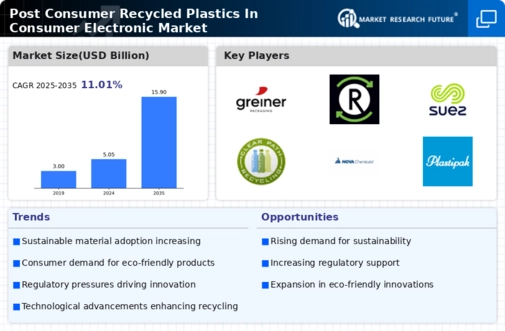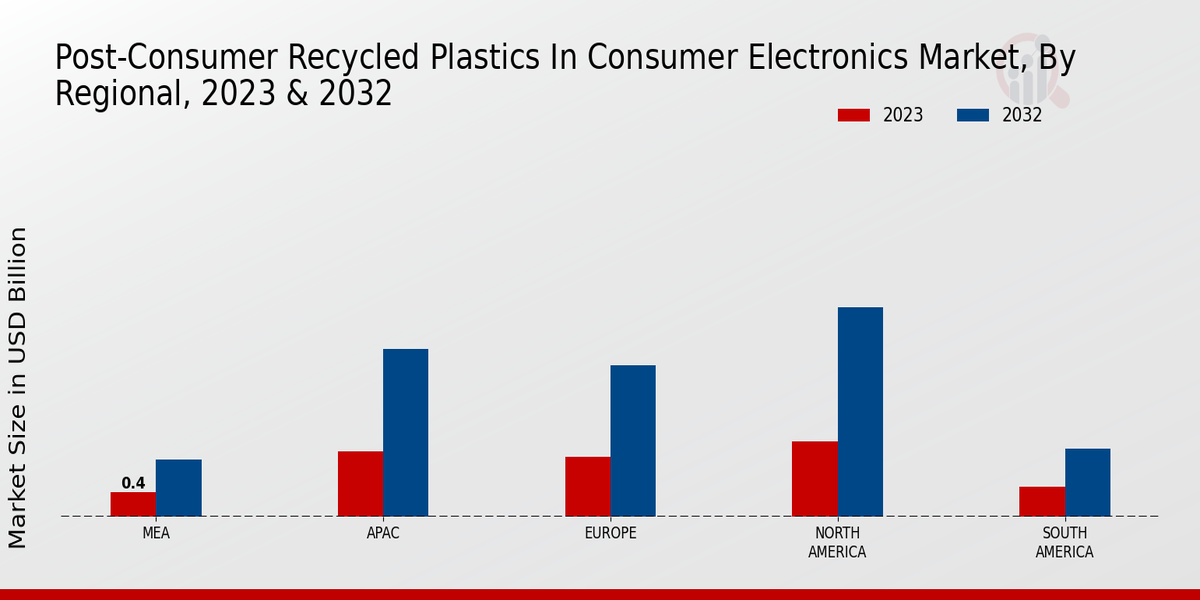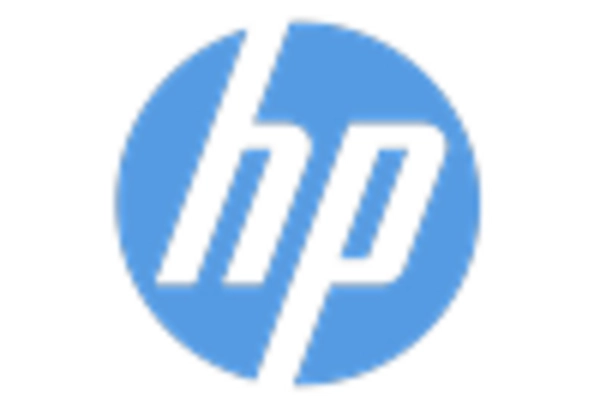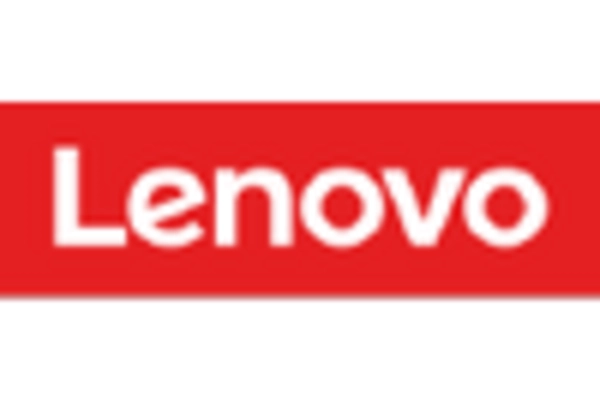Economic Incentives for Recycling
Economic factors are increasingly influencing the Post Consumer Recycled Plastics In Consumer Electronic Market, particularly through incentives for recycling initiatives. Governments and organizations are offering financial incentives to encourage the collection and processing of post-consumer plastics. These incentives can take the form of grants, tax breaks, or subsidies for companies that utilize recycled materials in their production processes. Such economic support not only lowers the cost of incorporating post-consumer recycled plastics but also stimulates investment in recycling infrastructure. As a result, manufacturers are more likely to adopt sustainable practices, thereby contributing to the growth of the Post Consumer Recycled Plastics In Consumer Electronic Market. This economic landscape suggests a promising future for the integration of recycled materials in consumer electronics, as financial motivations align with environmental goals.
Corporate Sustainability Initiatives
The Post Consumer Recycled Plastics In Consumer Electronic Market is increasingly shaped by corporate sustainability initiatives undertaken by major electronics manufacturers. Many companies are setting ambitious goals to reduce their carbon footprints and increase the use of recycled materials in their products. For instance, some leading brands have committed to using 50% recycled plastics in their product lines by 2030. These initiatives not only reflect a commitment to environmental responsibility but also resonate with consumers who prioritize sustainability. By integrating post-consumer recycled plastics into their manufacturing processes, companies can enhance their brand image and appeal to a growing segment of eco-conscious consumers. This trend is likely to accelerate as more firms recognize the long-term benefits of sustainability, thereby driving growth in the Post Consumer Recycled Plastics In Consumer Electronic Market.
Consumer Demand for Sustainable Products
The Post Consumer Recycled Plastics In Consumer Electronic Market is experiencing a notable shift in consumer preferences towards sustainable products. As awareness of environmental issues grows, consumers increasingly seek electronics made from recycled materials. This trend is reflected in market data, indicating that approximately 70% of consumers are willing to pay a premium for products that utilize recycled plastics. This demand drives manufacturers to incorporate post-consumer recycled plastics into their product lines, thereby enhancing their market appeal and aligning with consumer values. Companies that prioritize sustainability in their offerings are likely to gain a competitive edge, as they resonate with the environmentally conscious demographic. This consumer-driven shift not only supports the growth of the Post Consumer Recycled Plastics In Consumer Electronic Market but also encourages innovation in product design and material sourcing.
Regulatory Frameworks Promoting Recycling
The Post Consumer Recycled Plastics In Consumer Electronic Market is significantly influenced by evolving regulatory frameworks aimed at promoting recycling and reducing plastic waste. Governments worldwide are implementing stricter regulations that mandate the use of recycled materials in manufacturing processes. For instance, some regions have set targets for incorporating a minimum percentage of recycled content in electronic products. This regulatory push not only incentivizes manufacturers to adopt post-consumer recycled plastics but also fosters a more sustainable production environment. Compliance with these regulations can enhance brand reputation and consumer trust, as companies demonstrate their commitment to environmental stewardship. As these frameworks continue to evolve, they are likely to shape the operational strategies of businesses within the Post Consumer Recycled Plastics In Consumer Electronic Market, driving further adoption of recycled materials.
Technological Innovations in Recycling Processes
Technological advancements play a crucial role in the Post Consumer Recycled Plastics In Consumer Electronic Market by enhancing the efficiency and effectiveness of recycling processes. Innovations such as advanced sorting technologies and chemical recycling methods are improving the quality of recycled plastics, making them more suitable for use in consumer electronics. For example, new sorting technologies can increase the recovery rates of high-quality plastics, which can then be repurposed in electronic devices. This not only boosts the supply of post-consumer recycled plastics but also reduces the reliance on virgin materials. As technology continues to evolve, it is expected that the capabilities of recycling facilities will expand, further supporting the growth of the Post Consumer Recycled Plastics In Consumer Electronic Market and enabling manufacturers to meet rising consumer demand for sustainable products.


















Leave a Comment